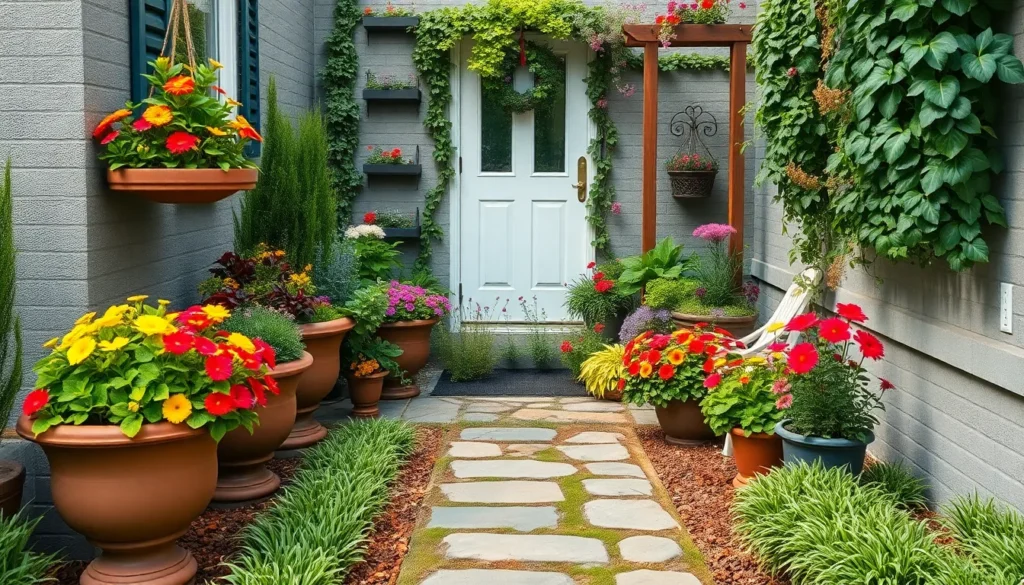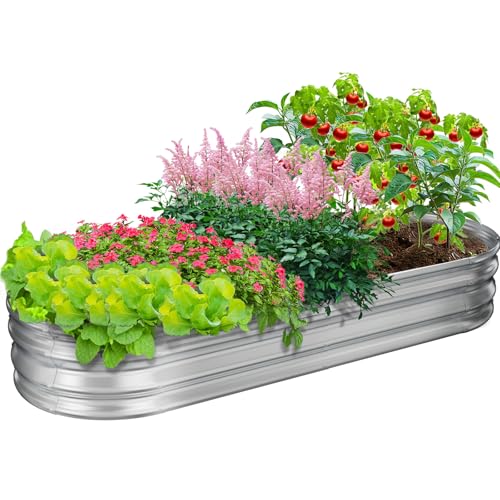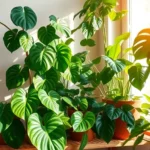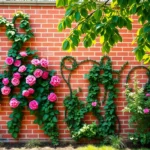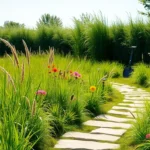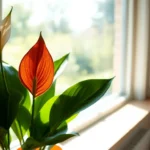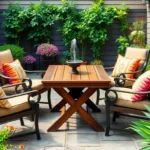Small front yards pack incredible potential for stunning curb appeal when we know the right design tricks. We’ve discovered that limited space doesn’t mean limited beauty – it simply means we need to be smarter about our choices.
Most homeowners think they can’t create an impressive garden in a compact front yard but we’re here to prove them wrong. With clever plant selection vertical growing techniques and strategic design elements we can transform even the tiniest front yard into a welcoming paradise that makes neighbors stop and stare.
The secret lies in maximizing every square foot while creating visual depth and year-round interest. We’ll show you how to layer plants use containers effectively and incorporate hardscaping elements that make your small front yard feel larger and more luxurious than you ever imagined possible.
Create a Welcoming Entrance With Colorful Container Gardens
Container gardens offer the perfect solution for transforming your small front yard entrance into a vibrant focal point. We can instantly add personality and warmth to our home’s exterior while maintaining complete flexibility in our design choices.
Choose the Right Size Containers for Your Space
Large containers work best for small front yards because they create more visual impact than scattered small pots. We recommend selecting containers that are at least 18 inches in diameter to provide adequate root space for plants and ensure they don’t dry out quickly.
Medium sized pots ranging from 12 to 16 inches complement larger containers perfectly when grouped in odd numbers. These work exceptionally well for seasonal displays featuring annuals like petunias, marigolds, or impatiens that we can easily swap out throughout the year.
Tall planters measuring 24 inches or higher add vertical dimension to our entrance design without taking up precious ground space. We position these against walls or beside doorways to create natural boundaries while softening harsh architectural lines.
Select Plants That Thrive in Front Yard Conditions
Shade tolerant plants like hostas, ferns, and begonias excel in containers positioned near covered porches or under tree canopies. We choose these varieties when our front entrance receives less than four hours of direct sunlight daily.
Sun loving perennials including lavender, sedum, and ornamental grasses perform beautifully in containers that receive six or more hours of direct sunlight. These low maintenance options provide year round structure while requiring minimal watering once established.
Seasonal annuals such as pansies, petunias, and coleus allow us to refresh our container displays throughout the growing season. We plant cool season varieties in spring and fall, then switch to heat tolerant options during summer months.
Mix Different Heights and Textures for Visual Interest
Thriller plants serve as focal points in our container arrangements by providing height and dramatic presence. We use specimens like dracaena spikes, fountain grass, or small evergreen shrubs as our tallest elements.
Filler plants create fullness around our thriller specimens by occupying the middle layer of our containers. We select bushy annuals like petunias, calibrachoa, or coleus that spread horizontally to fill empty spaces.
Spiller plants cascade over container edges to soften hard lines and add graceful movement to our displays. We incorporate trailing varieties such as sweet potato vine, bacopa, or trailing petunias that flow downward naturally.
Design a Charming Pathway Garden With Strategic Plant Placement
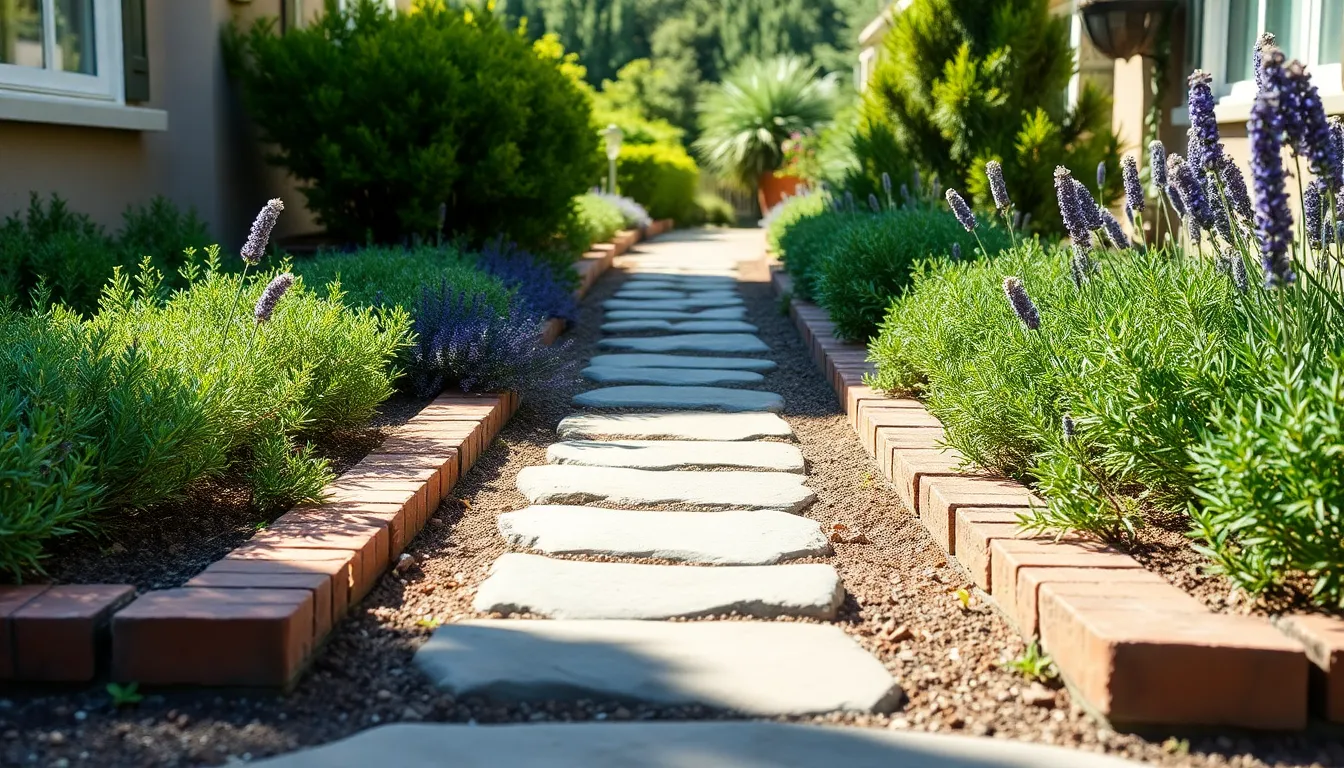
Creating a charming pathway garden transforms your front yard entrance into an inviting walkway that guides visitors to your door. We’ll show you how to maximize your small space with thoughtful plant placement and design elements.
Use Low-Growing Plants to Line Your Walkway
Low-growing ground covers create the perfect foundation for pathway gardens in small front yards. Creeping juniper spreads beautifully along walkway edges, reaching only 6 to 12 inches in height while providing year-round evergreen coverage. Thyme varieties like woolly thyme or creeping thyme release delightful fragrances when stepped on and produce tiny flowers throughout the growing season.
Ground cover plants require minimal maintenance once established, making them ideal for busy homeowners. Pachysandra and ajuga work exceptionally well in shaded pathway areas, while sedum varieties thrive in sunny locations. These compact plants prevent weeds from taking over your walkway borders while adding consistent texture and color.
Spacing your low-growing plants 12 to 18 inches apart allows them to fill in naturally over time. Dense plantings create a lush appearance that softens hard pathway edges and connects your walkway to surrounding industry elements.
Incorporate Fragrant Herbs for Sensory Appeal
Fragrant herbs transform ordinary pathways into sensory experiences that welcome guests with delightful scents. Lavender planted 2 to 3 feet from walkway edges releases its signature fragrance without overwhelming the space, while its purple blooms add seasonal color. Rosemary varieties like prostrate rosemary stay compact and provide aromatic evergreen foliage throughout the year.
Strategic herb placement near entryways allows visitors to brush against plants naturally, releasing their essential oils. Mint varieties should be contained in buried pots to prevent aggressive spreading, while oregano and sage create aromatic borders that complement pathway plantings.
Evening-scented herbs like four o’clock flowers and night-blooming jasmine extend the sensory experience into nighttime hours. These plants open their flowers as temperatures cool, creating a welcoming atmosphere for evening arrivals.
Add Stepping Stones or Decorative Edging
Stepping stones create defined pathways while reducing the amount of hardscaping needed in small front yards. Natural stone pavers spaced 18 to 24 inches apart allow grass or ground cover to grow between them, softening the overall appearance. Decorative concrete stepping stones come in various shapes and colors to complement your home’s architecture.
Edging materials help separate pathway areas from planted beds while adding visual structure to your design. Brick edging creates classic appeal and can be installed in various patterns like running bond or herringbone. Metal edging provides clean lines and virtually disappears once plants grow over it.
Creative edging options include recycled materials like wine bottles or reclaimed wood that add personality to pathway designs. River rock borders create natural transitions between walkways and planted areas, while allowing for drainage around pathway edges. Proper edging installation requires digging trenches 3 to 4 inches deep to ensure stability and longevity.
Maximize Vertical Space With Climbing Plants and Trellises
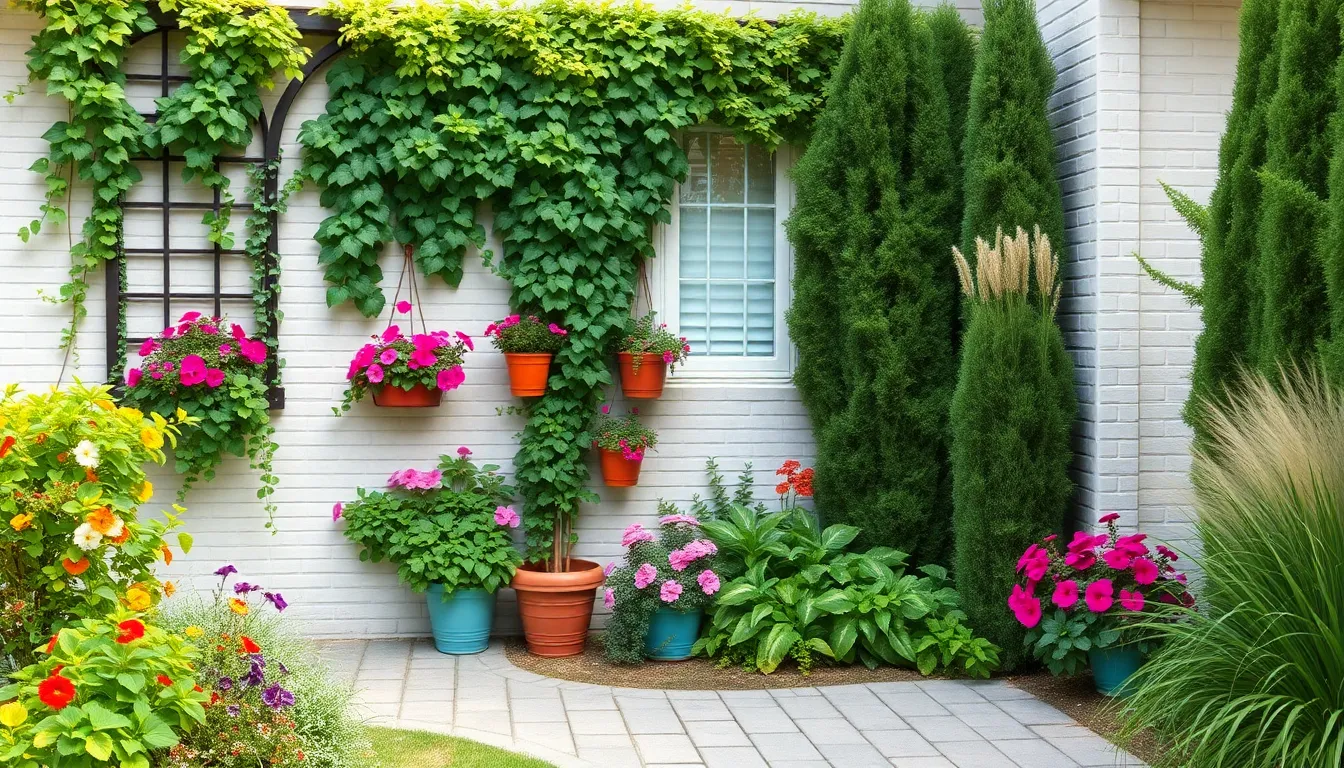
Vertical growing transforms small front yards into lush, layered landscapes that draw the eye upward. We’ve found that strategic use of climbing plants and supportive structures can double or triple your growing space without expanding your yard’s footprint.
Install Wall-Mounted Planters for Added Greenery
Wall-mounted planters bring life to blank exterior walls while preserving precious ground space for other garden elements. We recommend installing these planters at varying heights to create visual interest and accommodate different plant types. Metal brackets with drainage holes work best for most small front yard applications, supporting containers up to 12 inches in diameter.
Selecting appropriate plants for wall-mounted displays requires considering sun exposure and weight limitations. Trailing varieties like pothos, ivy, and string of pearls cascade beautifully from elevated positions. Compact flowering plants such as petunias, begonias, and small ferns thrive in wall planters when given proper drainage and regular watering.
Maintenance becomes simpler when we group similar watering needs together in adjacent planters. Installing a drip irrigation system or soaker hose can automate care for multiple wall-mounted containers simultaneously.
Choose Fast-Growing Vines for Quick Coverage
Fast-growing vines deliver immediate impact in small front yard spaces where patience isn’t practical. Morning glories can cover a 6-foot trellis in just one growing season, producing colorful blooms from summer through fall. Ivy varieties establish quickly and provide year-round coverage, though we suggest choosing less aggressive types like English ivy ‘Baltica’ for controlled growth.
Clematis offers stunning flowering displays while climbing 8 to 12 feet annually on trellises or arbors. We’ve seen homeowners achieve dramatic transformations using clematis varieties like ‘Jackmanii’ for purple blooms or ‘Henryi’ for white flowers. Sweet pea vines grow rapidly in cool weather and fill small spaces with fragrance and delicate flowers.
Supporting structures must be installed before planting to avoid root disturbance later. Arched trellises and arbors create focal points while providing essential climbing support for vigorous vines.
Create Privacy Screens With Tall, Narrow Plants
Tall, narrow plants form effective privacy barriers without consuming excessive ground space in compact front yards. Bamboo varieties like ‘Gracilis’ or clumping bamboo reach 8 to 15 feet while maintaining a 3 to 4-foot spread. Ornamental grasses such as fountain grass and feather reed grass grow vertically to 6 feet with minimal horizontal expansion.
Evergreen options provide year-round screening and include columnar junipers, arborvitae, and Italian cypress trees. We plant these varieties 3 to 4 feet apart for solid coverage within two growing seasons. Deciduous choices like ornamental cherry trees or flowering dogwoods offer seasonal interest with spring blooms and fall color.
Layering different heights creates more natural-looking privacy screens while maximizing small spaces. Combining 6-foot ornamental grasses with 10-foot columnar evergreens and 4-foot shrubs produces effective screening that doesn’t appear fortress-like from the street.
Build Raised Garden Beds to Define Your Space
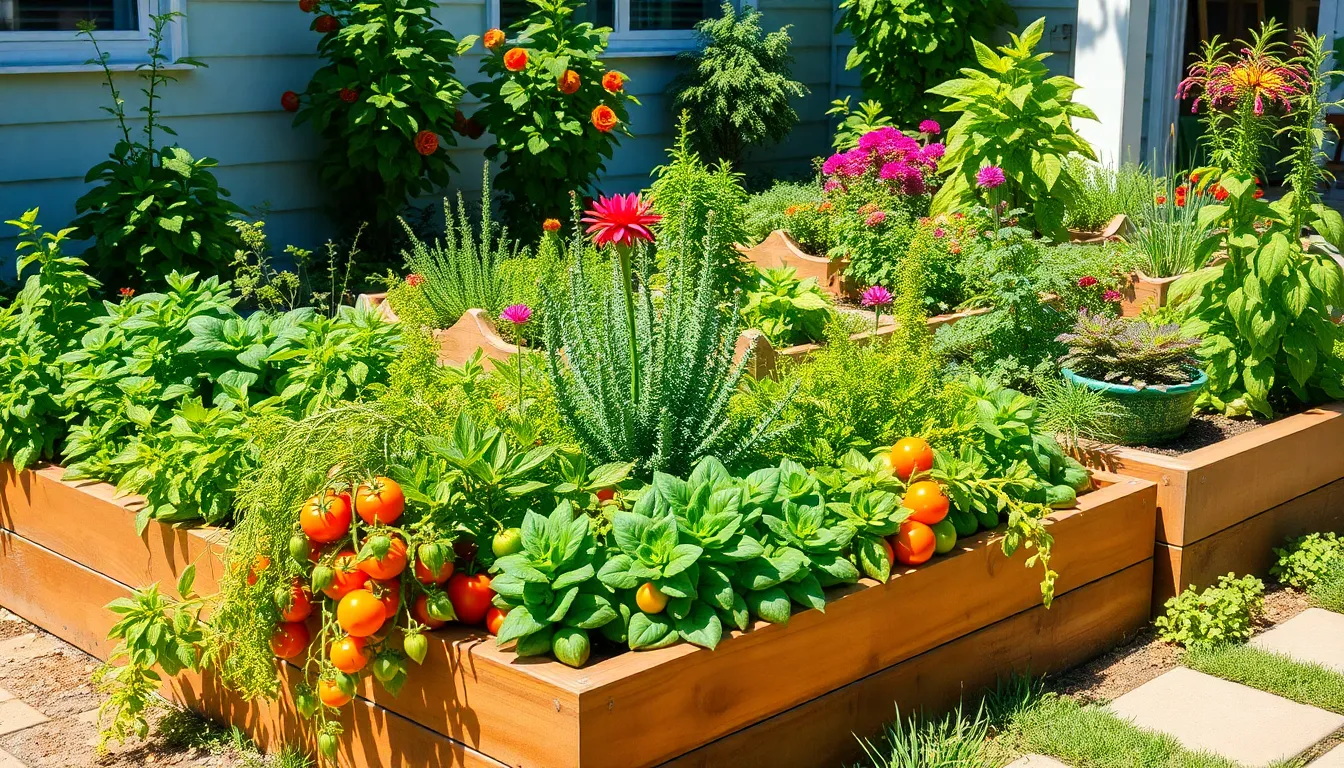
Raised beds transform small front yards by creating distinct zones and organized landscapes that maximize both beauty and functionality. We can establish clear boundaries between different areas while adding height variation that makes compact spaces appear larger and more ever-changing.
Use Compact Vegetables for Functional Beauty
Compact vegetables bring dual purpose to our raised bed designs by combining visual appeal with practical harvests. Cherry tomatoes create stunning cascading displays while producing abundant fruit throughout the growing season. Leafy greens like lettuce and spinach offer vibrant color variations from deep purples to bright greens that change with each planting cycle.
Herbs provide continuous interest with their diverse textures and fragrances that enhance both cooking and curb appeal. Basil produces lush green foliage with aromatic leaves, while colorful varieties like purple basil add dramatic contrast. Thyme creates dense, low growing mats with tiny flowers that attract beneficial pollinators to our front yard network.
We recommend choosing vegetables that produce continuously rather than single harvest crops to maintain consistent visual interest. Kale provides year round structure with its sturdy leaves, while Swiss chard offers rainbow colored stems that serve as living garden art.
Design Geometric Shapes for Modern Appeal
Geometric patterns create contemporary sophistication in raised bed layouts while maximizing planting space efficiency. Square and rectangular beds arranged in grid patterns establish clean lines that complement modern home architecture. We can use paving stones between beds to create walkways that reinforce the geometric theme while providing maintenance access.
Triangular raised beds work particularly well in corner spaces where traditional rectangular shapes might feel cramped. Circular beds soften harsh angles when positioned strategically among angular elements, creating visual balance throughout the front yard design.
Hexagonal patterns allow us to fit more planting area into tight spaces while creating honeycomb inspired arrangements that feel both organized and organic. We suggest using consistent materials like cedar or composite lumber to maintain visual cohesion across multiple geometric shapes.
Layer Plants by Height for Maximum Impact
Height layering in raised beds creates dramatic visual depth that makes small front yards appear significantly larger. We start with ground hugging plants like creeping thyme and succulents that spill over bed edges for a naturalized look. Mid level shrubs and perennials form the backbone of our planting scheme, providing structure and seasonal color changes.
Tall elements like dwarf fruit trees or large perennials anchor each bed while creating vertical interest that draws eyes upward. Trellises attached to raised bed backs support climbing plants that add another height dimension without consuming additional ground space.
We recommend using the “thriller, filler, spiller” principle where one dramatic tall plant serves as the focal point, medium plants fill the middle space, and trailing plants cascade over edges. This creates ever-changing compositions that remain interesting from multiple viewing angles throughout the seasons.
Strategic placement of taller elements ensures they don’t block views of shorter plants while creating natural privacy screening where needed. Ornamental grasses work exceptionally well as height anchors because they provide movement and sound while maintaining relatively narrow footprints in our compact raised bed designs.
Incorporate Drought-Tolerant Plants for Low-Maintenance Beauty
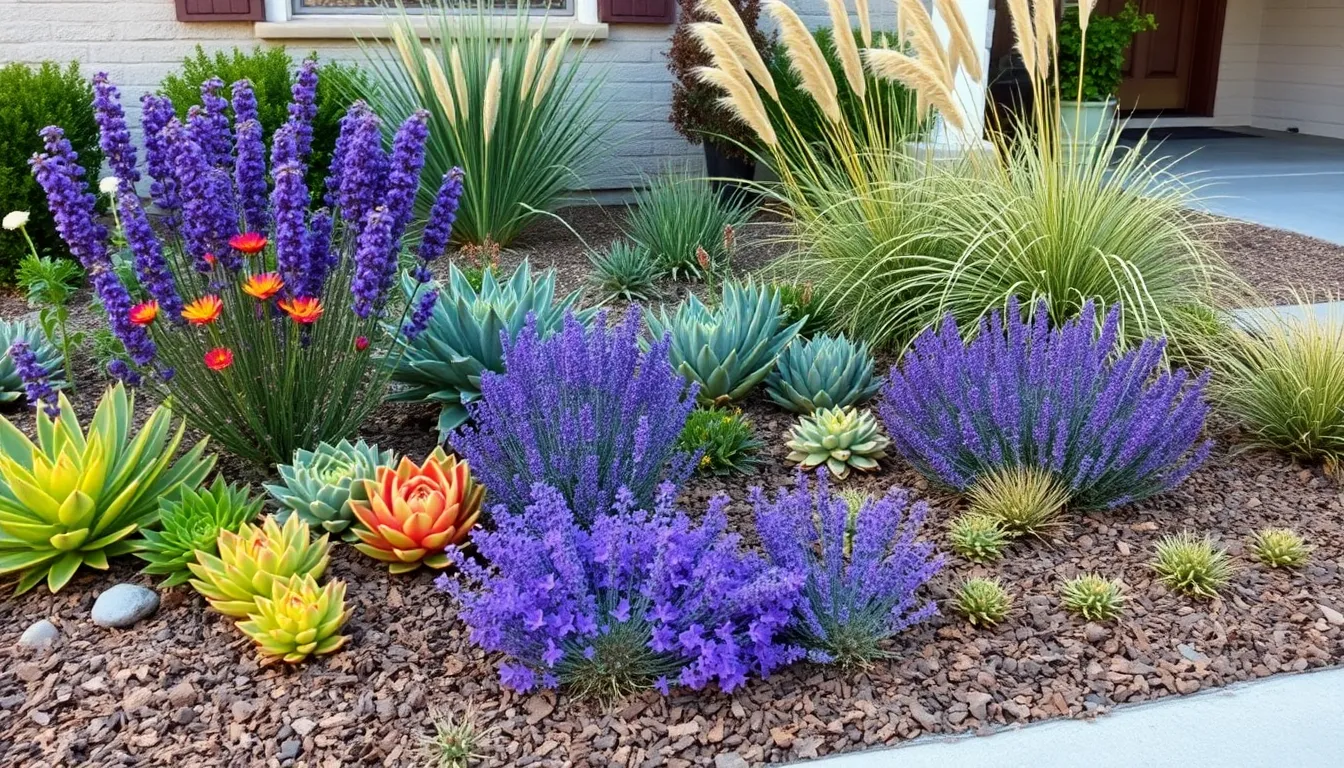
We can transform our small front yards into stunning, water-wise landscapes that require minimal upkeep while delivering maximum visual impact. Drought tolerant plants like succulents, lavender, sage, and ornamental grasses offer the perfect solution for busy homeowners who want beautiful curb appeal without constant watering.
Select Native Plants That Support Local Wildlife
Native plants create a thriving network right in our front yard while requiring less water and care than non-native species. Coneflowers, milkweed, and native grasses naturally adapt to local climate conditions and soil types, making them incredibly resilient choices for our landscapes.
Choosing these plants attracts local birds, bees, and butterflies, turning our small space into a wildlife haven. Pollinators benefit significantly from native species because they’ve evolved together over thousands of years, creating natural partnerships that support biodiversity.
Supporting local ecosystems becomes effortless when we select plants that belong in our region. Native varieties require fewer fertilizers, pesticides, and supplemental watering because they’re perfectly suited to our local environment.
Group Plants With Similar Water Needs Together
Hydrozoning simplifies our garden maintenance by organizing plants according to their watering requirements. We can create distinct zones with high, medium, and low water needs, ensuring each plant receives appropriate care without waste.
Efficient irrigation becomes achievable when we cluster drought tolerant succulents together and separate them from plants that need more moisture. This strategic grouping prevents overwatering delicate species while ensuring thirsty plants get adequate hydration.
Planning our plant placement around water needs saves time, money, and resources throughout the growing season. We’ll spend less time adjusting watering schedules and more time enjoying our beautiful front yard industry.
Add Mulch to Retain Moisture and Suppress Weeds
Organic mulch creates a protective barrier that conserves soil moisture and regulates temperature around our drought tolerant plants. Wood chips and shredded bark gradually decompose, enriching the soil while reducing our watering frequency.
Applying a 2-3 inch layer of mulch suppresses weed growth naturally, eliminating the need for frequent weeding sessions. This cost effective strategy keeps our small front yard looking tidy and professional with minimal effort.
Moisture retention improves dramatically when we use quality mulch around our plantings, extending the time between watering sessions. Our plants stay healthier and more resilient during dry spells, creating a sustainable industry that thrives year round.
Add Focal Points With Decorative Elements and Statement Plants
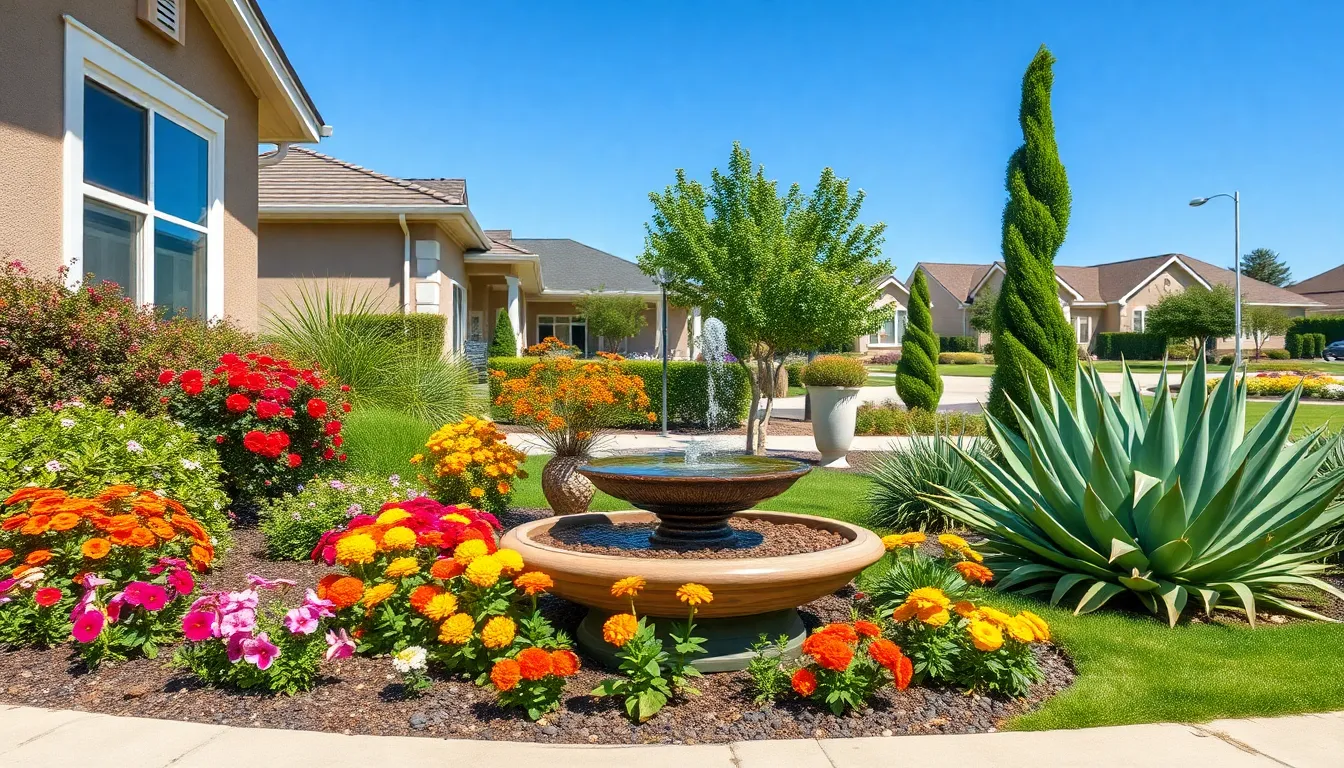
Creating visual anchors in your small front yard transforms ordinary spaces into captivating landscapes. Strategic placement of eye-catching elements guides visitors’ attention while maximizing your limited square footage.
Install a Small Water Feature for Tranquil Sounds
Water features bring instant serenity to compact front yards through gentle, flowing sounds that mask street noise. A tabletop fountain fits perfectly on a porch or patio corner, requiring minimal space while creating maximum impact. Wall-mounted fountains work exceptionally well for narrow yards, providing vertical interest without consuming precious ground area.
Birdbaths serve dual purposes by attracting wildlife like cardinals and blue jays while adding architectural interest to your industry. Position these features near windows where you’ll enjoy watching visiting birds throughout the day. Solar-powered options eliminate the need for electrical connections, making installation simple and cost-effective.
Small pond features with aquatic plants like water lilies create natural focal points that reflect surrounding foliage. These installations typically require 2-3 square feet of space and can include LED lighting for evening ambiance. Maintenance involves weekly water level checks and monthly cleaning to keep the feature functioning beautifully.
Use Colorful Annuals to Create Seasonal Interest
Seasonal flowers provide continuous color rotation throughout the year, ensuring your front yard never looks static. Spring annuals like pansies and primrose bloom when most perennials remain dormant, creating early season excitement. Summer varieties such as marigolds and zinnias deliver vibrant colors during peak growing months.
Fall annuals including mums and ornamental kale extend color well into autumn, bridging the gap between summer blooms and winter dormancy. These plants typically cost $3-8 per container and provide 3-4 months of continuous flowering. Strategic placement in containers allows easy seasonal swapping without disturbing permanent plantings.
Mass planting single varieties creates bold color statements that appear larger than scattered individual plants. Group plantings of 5-7 identical annuals in key locations draw attention and create cohesive design themes. This approach works particularly well near entrances where maximum visual impact welcomes guests.
Place Sculptural Plants as Natural Artwork
Architectural plants with striking forms serve as living sculptures that provide year-round visual interest. Agave and yucca plants offer dramatic spiky silhouettes that complement modern home styles while requiring minimal maintenance. These drought-tolerant specimens typically reach 2-4 feet in height and width, making them perfect for small space impact.
Ornamental grasses like fountain grass and Japanese forest grass create graceful movement with their flowing textures. These plants add vertical dimension ranging from 18 inches to 6 feet tall, depending on variety selection. Their seasonal changes from green summer growth to golden autumn colors provide natural artwork that evolves throughout the year.
Topiary forms in boxwood or privet create formal sculptural elements that define spaces with geometric precision. Standard topiary shapes include spheres, cones, and spirals that maintain their form with quarterly trimming. Container-grown topiaries offer flexibility for seasonal repositioning and protection during harsh weather conditions.
Create Year-Round Interest With Evergreen Foundation Plantings
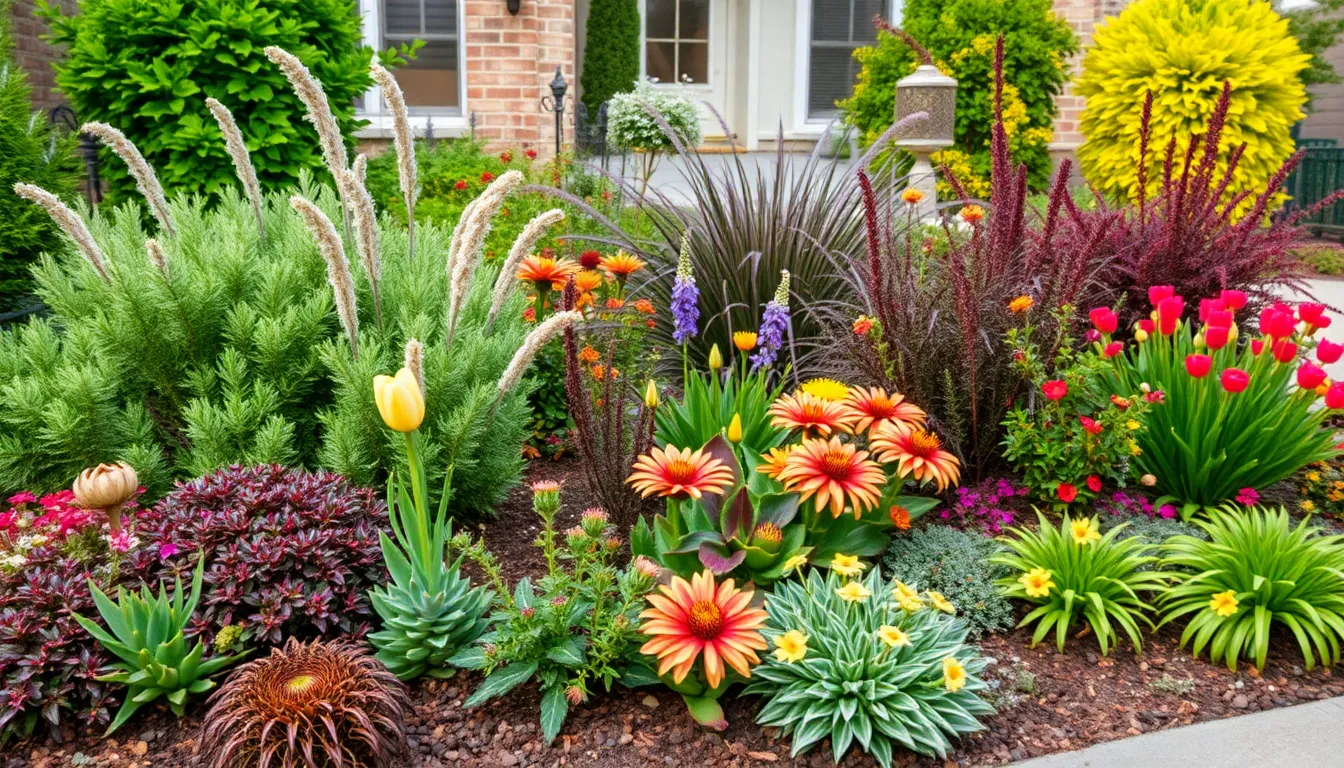
Building on our previous focal point strategies, evergreen foundation plantings provide the backbone for stunning year-round curb appeal in small front yards. We’ll establish a lasting framework that maintains visual interest even during winter months when other plants go dormant.
Choose Dwarf Varieties to Maintain Proper Scale
Selecting dwarf evergreen shrubs prevents overwhelming your limited front yard space while delivering maximum visual impact. Boxwood cultivars like ‘Green Gem’ reach only 2-3 feet at maturity, making them perfect for foundation borders without blocking windows or walkways. Holly varieties such as ‘Dwarf Burford’ provide glossy foliage and colorful berries while staying compact at 4-5 feet tall.
Dwarf conifers add sculptural elements without dominating the industry design. Mugo pine stays naturally rounded at 3-4 feet, while dwarf Alberta spruce creates elegant vertical lines without exceeding 6-8 feet. We recommend these smaller varieties because they require minimal pruning and won’t outgrow their designated spaces within 5-10 years.
Proportional plantings create harmony between your home’s architecture and industry features. Dwarf hydrangea varieties like ‘Little Lime’ offer seasonal blooms while maintaining a 3-5 foot spread that won’t overwhelm narrow planting strips. Compact azaleas such as ‘Encore’ series provide spring and fall flowering cycles in manageable 2-4 foot forms.
Mix Different Textures and Foliage Colors
Combining various leaf textures creates ever-changing visual layers that draw attention throughout all seasons. Smooth-leafed plants like camellia contrast beautifully with needle-textured conifers and broad-leafed hostas in shaded areas. We layer fine-textured ornamental grasses such as fountain grass alongside bold-textured plants like bergenia for striking combinations.
Foliage color variations prevent monotonous green landscapes while maintaining sophisticated design principles. Golden cultivars like ‘Gold Mound’ spirea brighten darker corners, while burgundy-leafed plants such as ‘Crimson Pygmy’ barberry add depth without requiring additional space. Silver-leafed artemisia or dusty miller create cooling effects between warmer-toned plantings.
Ornamental grasses introduce movement and seasonal interest through their changing characteristics. Feather reed grass provides vertical structure reaching 4-5 feet, while shorter sedge varieties create textural groundcover at 12-18 inches. We position these grasses strategically to catch light and create gentle motion that enhances the overall garden experience.
Plan for Seasonal Blooms Throughout the Year
Spring flowering bulbs kickstart the growing season with vibrant colors that emerge before deciduous plants leaf out. Tulips and daffodils planted in clusters of 15-25 bulbs create substantial impact in small spaces, while crocus and snowdrops provide earlier blooms starting in late winter. We plant these bulbs at varying depths to extend the flowering period from February through May.
Summer perennials maintain colorful displays during the hottest months when many plants struggle. Black-eyed Susans bloom continuously from June through October, while purple coneflowers attract beneficial pollinators and provide seed heads for winter interest. Daylilies offer diverse color options and bloom sequences when we select early, mid, and late-season varieties.
| Season | Plant Type | Bloom Duration | Maintenance Level |
|---|---|---|---|
| Spring | Bulbs (tulips, daffodils) | 4-6 weeks | Low |
| Summer | Perennials (coneflowers) | 12-16 weeks | Medium |
| Fall | Asters, chrysanthemums | 6-8 weeks | Medium |
| Winter | Evergreen berries | 8-12 weeks | Low |
Fall flowering plants extend garden interest when most landscapes begin declining toward dormancy. Asters provide late-season purple and white blooms that complement autumn foliage colors, while hardy chrysanthemums offer diverse flower forms in warm seasonal tones. We select varieties that withstand early frosts to maximize their display period through November.
Winter interest comes from evergreen plants with colorful berries and distinctive bark textures. Holly berries persist through winter months, providing food for birds while adding red accents to snowy landscapes. Winterberry holly loses its leaves but retains bright orange-red berries on architectural branch structures, creating striking winter focal points that complement our evergreen foundation framework.
Conclusion
Small front yards offer incredible potential when we approach them with creativity and strategic planning. By combining vertical elements with ground-level plantings we can create depth and visual interest that rivals much larger spaces.
The beauty lies in selecting the right combination of techniques for your exact conditions. Whether you choose drought-tolerant succulents raised beds or climbing vines the key is maintaining balance between functionality and aesthetics.
Remember that successful small yard design isn’t about cramming everything in – it’s about choosing elements that work harmoniously together. With thoughtful plant selection proper spacing and a few well-placed focal points your compact front yard will become an impressive welcome statement that enhances your home’s curb appeal year after year.
Frequently Asked Questions
Can small front yards really have impressive curb appeal?
Absolutely! Small front yards can achieve stunning curb appeal through smart design techniques. The key is maximizing every square foot with strategic plant placement, vertical growing methods, and layered designs. By using containers, climbing plants, and creating visual depth, even the tiniest spaces can become welcoming and beautiful entrances that rival larger yards.
What are the best container plants for small front yards?
Choose plants based on your sunlight exposure. For shady areas, use hostas, ferns, and begonias. For sunny spots, select sun-loving perennials, colorful annuals, and herbs like lavender and rosemary. Mix different heights and textures in your containers, and group medium-sized pots in odd numbers for maximum visual impact.
How can I create a pathway garden in my small front yard?
Line your walkway with low-growing ground covers like creeping juniper and thyme, which require minimal maintenance and prevent weeds. Add fragrant herbs such as lavender for sensory appeal. Use stepping stones and decorative edging materials like brick or natural stone to define the path and create visual structure.
What climbing plants work best for vertical gardening?
Fast-growing vines like morning glories, clematis, and climbing roses provide quick coverage and visual impact. For shaded areas, consider ivy or climbing hydrangea. Use wall-mounted planters and trellises to maximize vertical space while preserving ground area. Choose plants appropriate for your sun exposure and weight limitations.
How do I create privacy in a small front yard?
Use tall, narrow plants that don’t consume much ground space. Bamboo, ornamental grasses, and columnar evergreens work excellently for screening. Layer different heights to achieve a natural look, and consider combining these with climbing plants on trellises for maximum privacy without overwhelming your small space.
What are the benefits of raised garden beds for small yards?
Raised beds define spaces, create organized landscapes, and improve drainage. They allow you to grow compact vegetables like cherry tomatoes and herbs while adding visual structure. Design geometric shapes for modern appeal, and use height layering with the “thriller, filler, spiller” principle to create dramatic depth and year-round interest.
Which drought-tolerant plants are best for low-maintenance yards?
Succulents, lavender, ornamental grasses, and native plants like coneflowers and milkweed are excellent choices. These plants require less water and care while providing beautiful textures and colors. Native varieties also support local wildlife and pollinators, making your yard both attractive and environmentally beneficial.
How can I add focal points to my small front yard?
Install small water features like tabletop fountains or birdbaths to create tranquility and attract wildlife. Use sculptural plants such as agave and ornamental grasses as living artwork. Add colorful seasonal annuals for changing interest, and incorporate decorative elements that serve as conversation starters while maintaining proportion to your space.
What evergreen plants work best for year-round appeal?
Choose dwarf varieties of evergreens to prevent overwhelming small spaces while providing visual impact. Mix different textures and foliage colors like blue spruce, golden arborvitae, and variegated boxwood. Plan for seasonal blooms and colorful berries to ensure continuous interest, especially during winter months when other plants are dormant.
How do I maintain plants with different watering needs?
Use hydrozoning by grouping plants with similar water requirements together. This simplifies maintenance and improves irrigation efficiency while preventing overwatering. Apply organic mulch around plants to retain moisture, suppress weeds, and reduce maintenance efforts. This system ensures each plant receives appropriate care while minimizing your workload.

